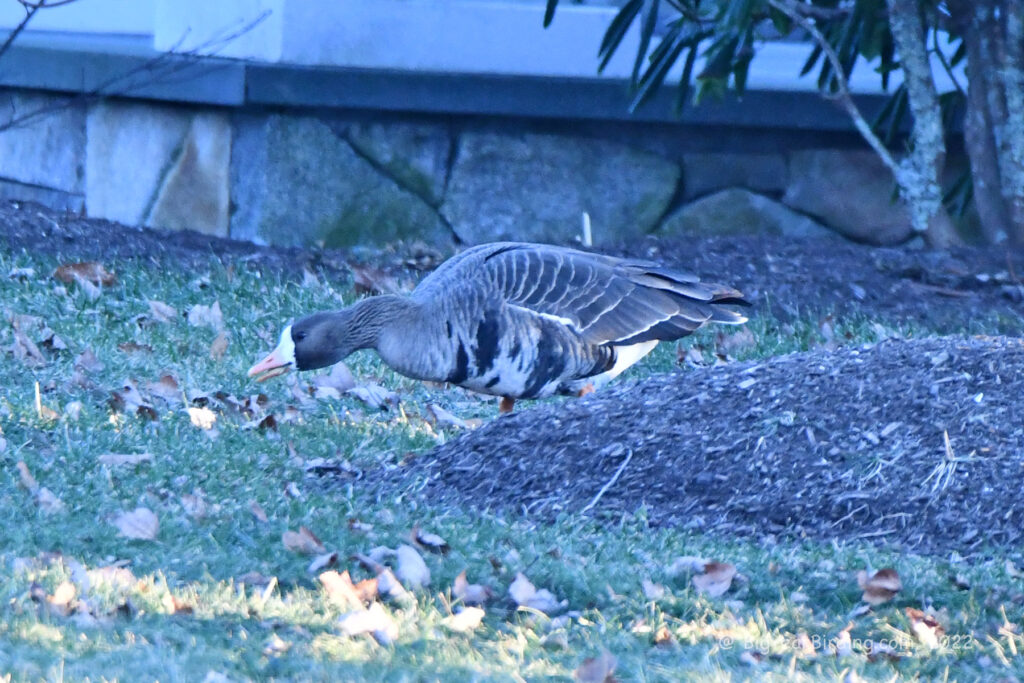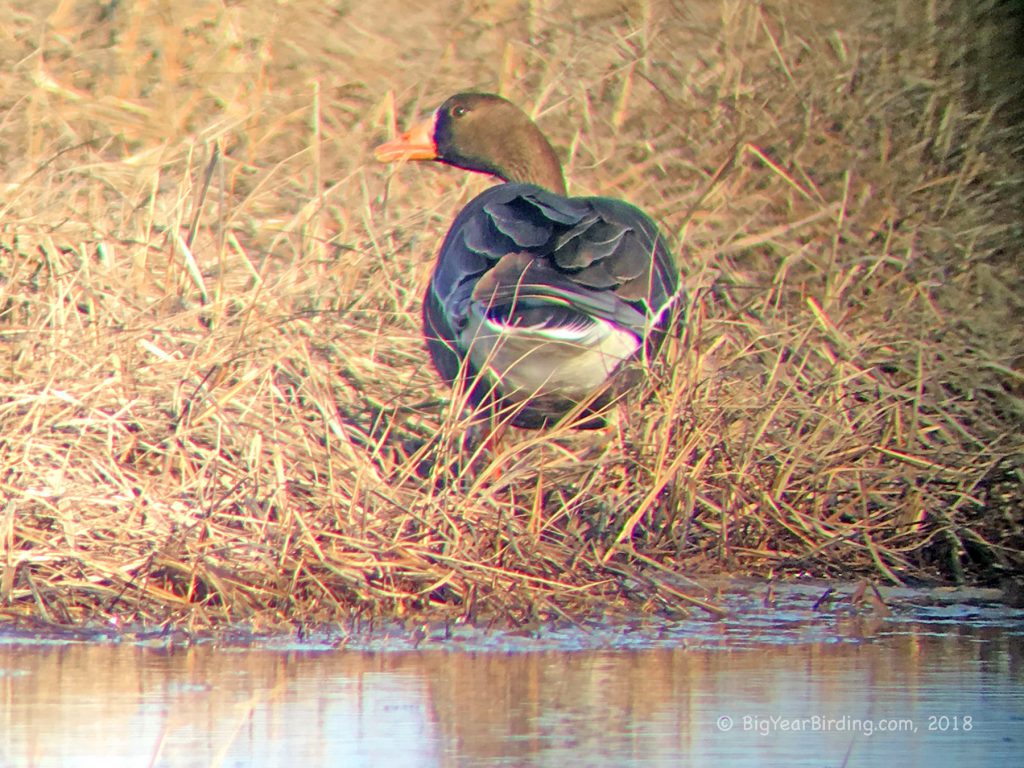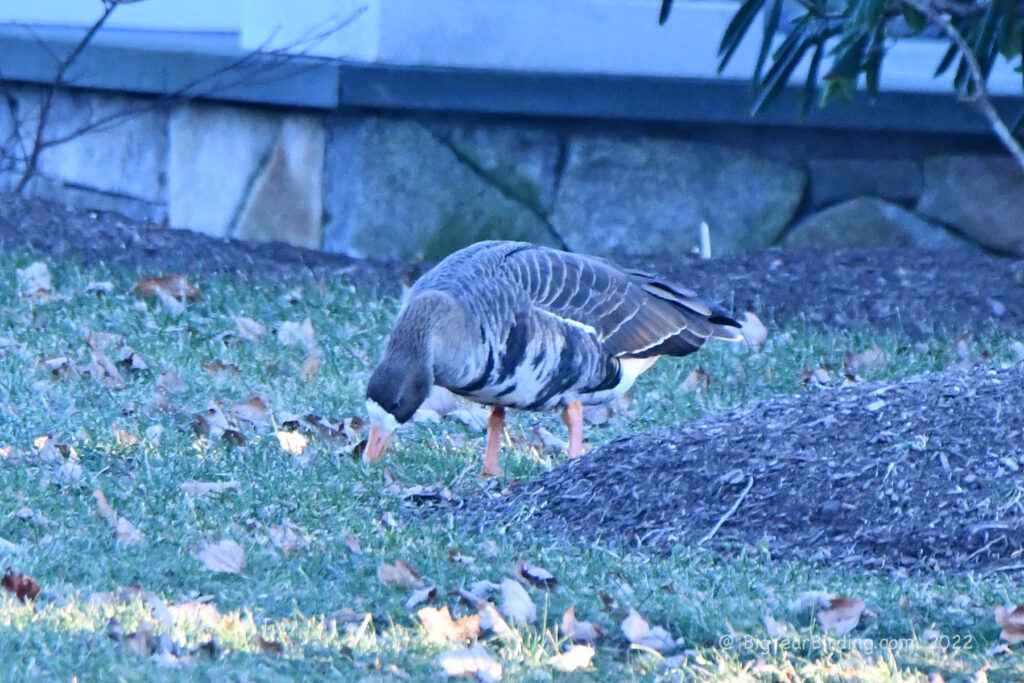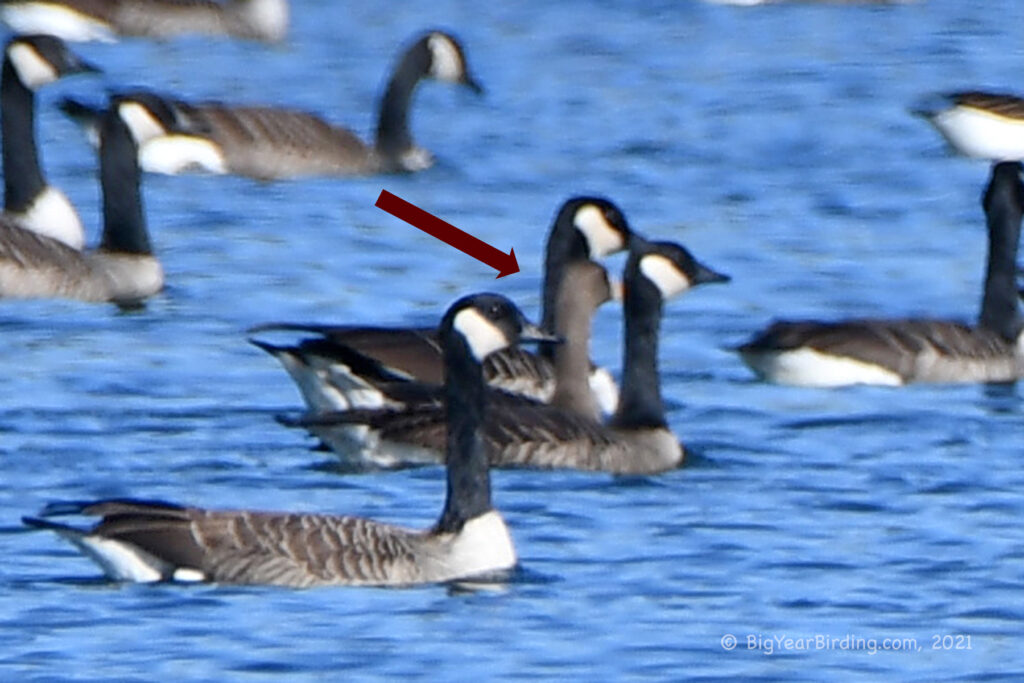
The Greater White-fronted Goose (Anser albifrons) is a medium-sized goose species with a wingspan of 51 to 63 inches and a length of 25 to 32 inches. Adults have a brownish-gray body with black bars on the flanks and a distinctive white forehead and eye stripe. The bill and feet are pinkish-orange, and the eyes are dark brown. Males and females have similar plumage, although males are usually slightly larger than females.

The Greater White-fronted Goose breeds in the tundra and forest-tundra regions of northern Eurasia and North America. During the fall migration, they form large flocks and fly south to wintering grounds in the southern United States, Mexico, and even as far south as Central America. In spring, they fly back north to their breeding grounds, often stopping to rest and feed in wetlands along the way.
Adult Greater White-fronted Geese weigh between 3.5 and 7.7 pounds, with males usually weighing slightly more than females. Juvenile birds are typically smaller than adults and have less distinct markings on their plumage. They feed on a variety of plant material, including grasses, sedges, and grains, as well as some animal matter such as insects and small invertebrates.
The Greater White-fronted Goose is known for its distinctive, high-pitched honking call. During migration, they can often be heard flying overhead in large flocks, honking loudly as they go. In recent years, populations of this species have shown some declines, primarily due to habitat loss and degradation.

Overall, the Greater White-fronted Goose is an impressive bird that is easily recognized by its striking white forehead and distinctive call. As they travel between their breeding and wintering grounds, they provide a spectacle of migration that is not to be missed.

